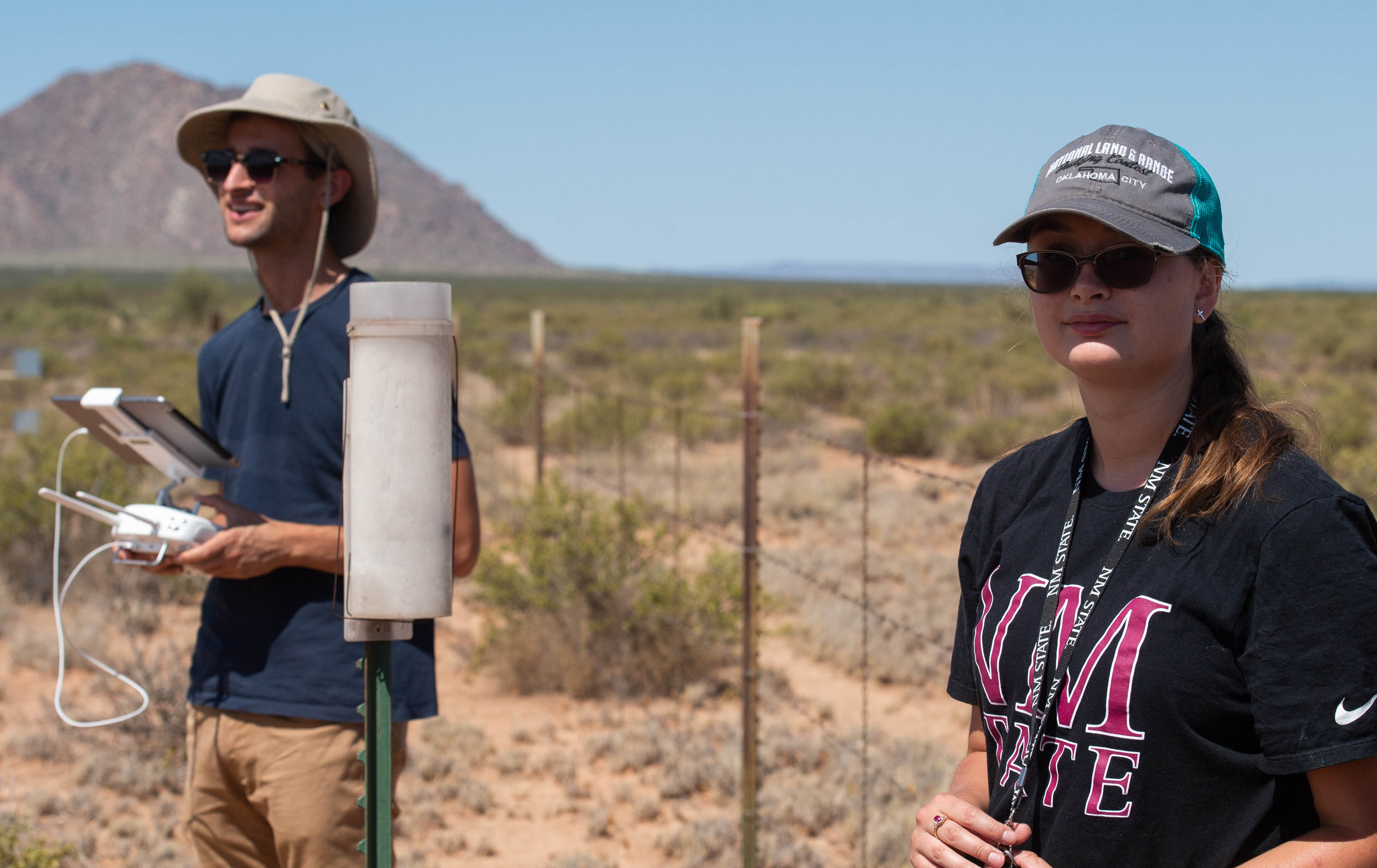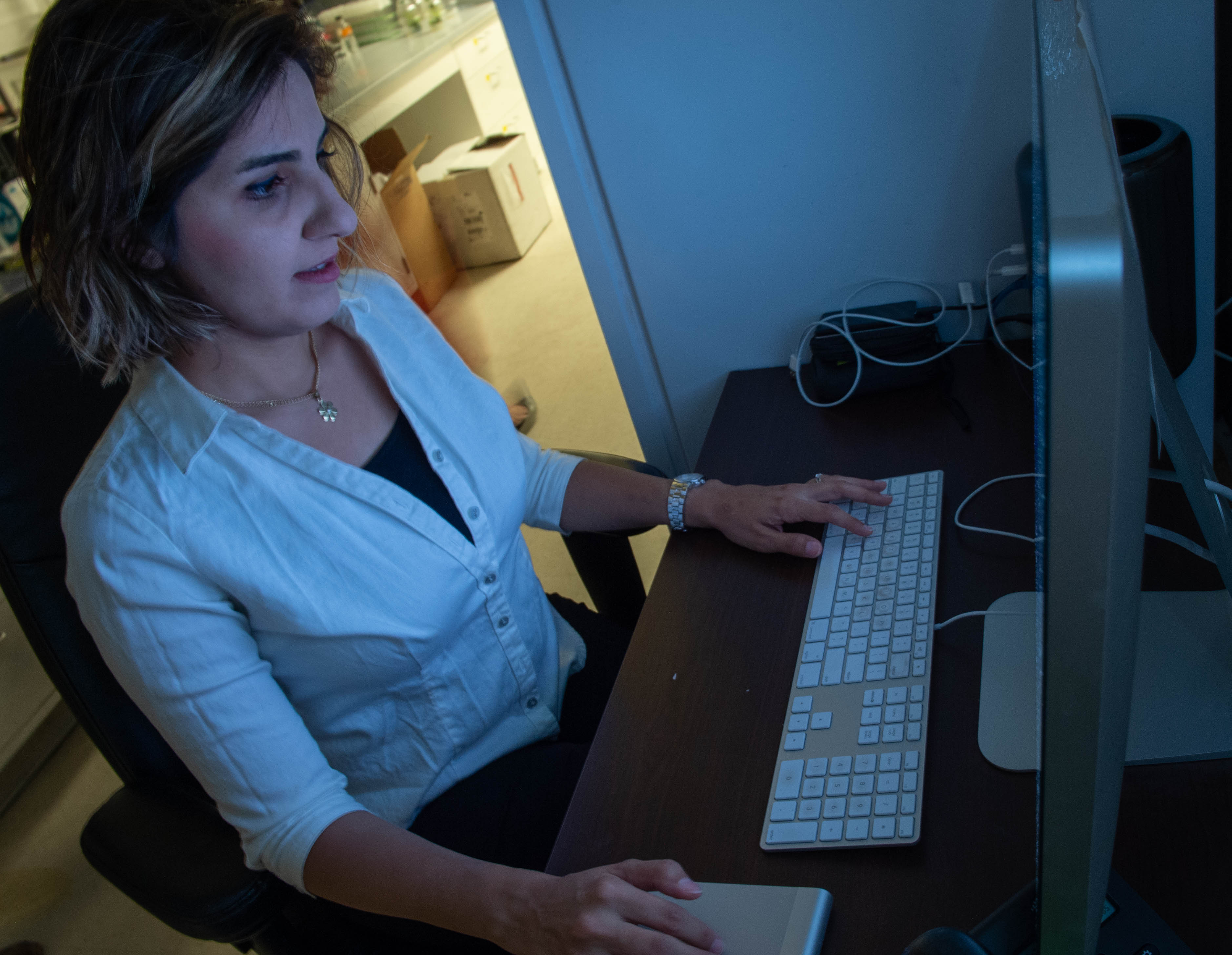NMSU researchers drive agriculture into the future with big data


Researchers in the College of Agricultural, Consumer and Environmental Sciences at New Mexico State University are working to solve an array of real-world challenges – from tracking livestock behavior to improving agricultural sustainability and developing artificial intelligence for agriculture – by using big data.
Big data is a loosely defined term for large datasets collected and analyzed by researchers to reveal patterns, trends and associations, and predict behaviors and interactions. Many industries, including agriculture and farming, use big-data and supercomputing methods to identify solutions for some of the world’s most pressing challenges.
“With the world’s population expected to grow to more than 9 billion by 2050, there is an urgent need to produce more food on less land with less water and fewer inputs,” said Natalie Goldberg, College of ACES interim associate dean and director of the Agricultural Experiment Station.
“The ability to collect enormous amounts of data is a reality,” Goldberg added. “Big data science moves that information to data analysis, machine learning, the development of decision-making tools, and the use of artificial intelligence and autonomous systems, including robotics. Implementation of big data science into agriculture will move technology development into solutions that will help solve some of agriculture’s most complex problems.”
By implementing big data and emerging technologies, Goldberg said, agricultural producers can maximize efficient farming and ranching, save water, reduce chemical use, solve labor problems, and reduce food waste and contamination.
Currently, 10 faculty members in the College of ACES and the Jornada Experimental Range are leading collaborative research efforts that utilize big data and supercomputing.
Derek Bailey, a professor in the Department of Animal and Range Science, is using GPS tracking and other sensors to monitor the welfare, productivity and sustainability of cattle and sheep on rangelands.
“Our lab is testing real-time and near real-time GPS tracking systems, accelerometer ear tags and other sensors that have promise for use by ranchers,” said Bailey, who has been tracking cattle since 1998. “We combine these on-animal sensors with satellite imagery to simultaneously monitor forage resources and livestock behavior. Our group is working with animal breeding scientists at Colorado State University to identify genetic markers associated with cattle movement patterns grazing rugged rangelands.”
Bailey also plans to develop genomic-based breeding values for cattle terrain use. This will allow ranchers to select animals that use steep slopes and roam areas far from water sources, which are typically avoided. His goal, he said, is to use GPS tracking, sensor monitoring, satellite imagery and genomics to develop “precision livestock management” systems – an approach that requires collecting, processing and analyzing large datasets.
“In the past, we could rely on conventional software and desktop computers,” Bailey said. “With technical improvements of sensors and associated reductions in equipment price, we can now track entire herds of cattle and collect movement data from accelerometers at a rate of 24 hertz.”
In future studies, Bailey hopes to start using drones to collect data. When that time comes, he will join other faculty members, including Niall Hanan, who are already using unmanned aerial vehicles, or drones, in their research.
Hanan, a professor in the Department of Plant and Environmental Sciences, and his research group are working on environmental and ecological data analysis using cloud-based computing as well as the high-performance computing facilities available at NMSU.
“Our work includes analysis of satellite imagery using Google Earth Engine to better understand vegetation change in the drylands of the southwestern United States, Africa and globally,” Hanan explained. “We also carry out computer-intensive analysis of UAV images and terrestrial lidar data to derive detailed three-dimensional vegetation structure information relevant to the productivity of shrublands in the southwestern U.S. and globally,” he added.
Lara Prihodko, a college associate professor in the Department of Animal and Range Science, works with very large datasets in her research centered on regional and global-scale ecology. Two of her current projects include mapping and modeling tree cover and woody biomass for the entire Sub-Saharan Africa region and modeling regional land surface fluxes, including water, energy and carbon, over the Jornada Basin.
“Our data sets include large geospatial and climate data, such as optical and radar satellite imagery and global climate re-analyses. As satellite systems have developed, data volumes have increased exponentially, Prihodko said, “so we increasingly rely on big-data analysis techniques, high performance computers and cloud computing to process and analyze it.”
Earlier this year, College of ACES Dean Rolando Flores established an interdisciplinary team of 12 researchers from four colleges – ACES, Arts and Sciences, Engineering and Business – to collaborate on a white paper focused on developing artificial intelligence for agriculture.
“Over the next several years, these technologies will become increasingly prevalent in farming and ranching operations, which will likely lead to the greatest increase in farming and ranching since mechanization,” Goldberg said. “These problems are complex, and development and implementation of big data and artificial intelligence into agriculture requires researchers from across diverse disciplines to work together for solutions.”
Jennifer Randall, a professor in the Department of Entomology, Plant Pathology and Weed Science, was part of the research group that drafted the white paper. She also oversees research in the Randall Lab, which she founded to focus on the genetic and molecular mechanisms of plant development and plant-microbe interactions.
Randall is specifically interested in pecan development, including the molecular mechanisms involved in floral initiation, nutrient acquisition and salinity tolerance, she said.
“We are working with large RNA-sequencing datasets for gene expression elucidation,” she said, noting the big data methods used by her and her students. “Our lab is involved in many collaborative efforts with pecan trees, including genome sequencing efforts, genome-wide association studies with large data sets for marker development.”
At NMSU, Flores said, scientists and engineers are working together in the College of ACES to solve the challenging problems facing farmers, ranchers and food processors in New Mexico.
“Those problems deal with environmental issues, accentuated by global warming, lack of farm and ranch labor that makes our products more expensive and less competitive in global markets, and a plethora of issues that only advanced science and new technologies can solve in agriculture in the years to come,” he said. “However, the College of ACES has taken the challenge and is getting ready to develop solutions to the problems.”


